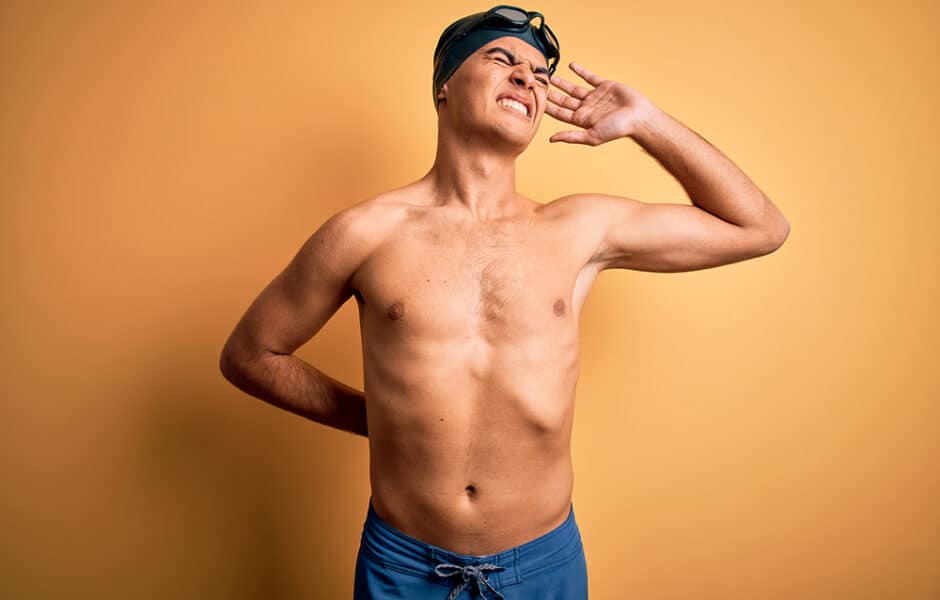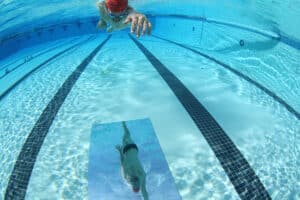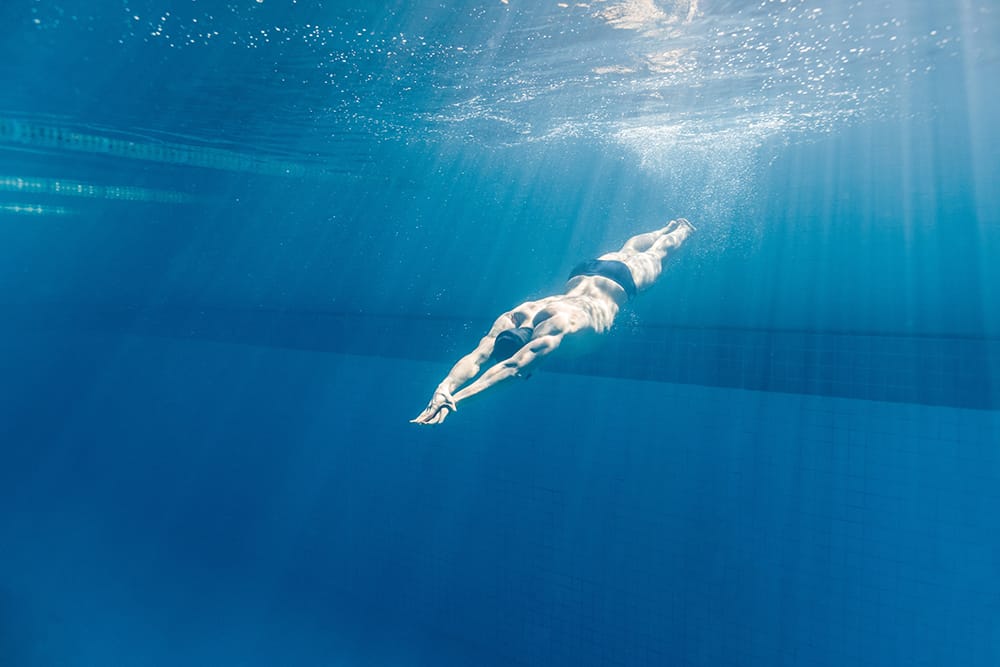THE 4 MOST COMMON SWIMMING INJURIES & HOW TO TREAT THEM

Swimming Injuries Can be Serious
Swimming injuries range from mild strains to more serious muscle tears and tendon inflammation. These injuries are typically caused by improper swimming techniques and overexertion. Whether you’re a professional swimmer or a casual enjoyer of the sport, you should be aware of the most common swimming injuries, what causes them, and what you can do to treat and prevent them in the future.
This article will provide an overview of the most common swimming injuries, how you can strengthen those muscle groups, and the swimming equipment you can utilize to perfect your form and avoid further injuries.
The Most Common Swimming Injuries
Shoulder Impingement
 Shoulder impingement (also known as Swimmer’s Shoulder) is a common swimming injury caused by repetitive overhead movements. Symptoms may include pain when lifting the arm, limited range of motion, inflammation, and weakness. It can also result in permanent internal scarring if pushed too far.
Shoulder impingement (also known as Swimmer’s Shoulder) is a common swimming injury caused by repetitive overhead movements. Symptoms may include pain when lifting the arm, limited range of motion, inflammation, and weakness. It can also result in permanent internal scarring if pushed too far.
A shoulder impingement doesn’t happen suddenly. It builds over frequent strenuous sessions due to the tendons being pressed against the bone and gradually inflaming. This inflammation stretches down to the rotator cuff tendons and can result in tears if left untreated.
Treatments Include:
- Resting for longer periods after exercising
- Icing to reduce swelling
- Warming up before sessions and including stretching days in your weekly regimen
Lower Back Pain

Treatments Include:
- Avoiding sitting positions as they apply pressure to the lower back
- Gentle stretching to release tension in the spine
- For acute pain caused by spondylolysis, contact a medical professional
Bicep Tendonitis

Treatments Include:
- Icing the point of pain to reduce swelling
- Gently stretching the scapula, posterior capsule, and rotator cuff areas
- Taking nonsteroidal anti-inflammatory drugs (seek professional guidance)
Swimmer’s Knee

Treatments Include:
- Gentle stretches to restore full motion
- Taping the knee
- Icing to reduce swelling
Strengthen Your Weak Points Outside the Pool

If you wish to start strengthening the pained area before you’ve fully healed, seek out a physical therapist. They can gauge what your body is ready to take on and create an exercise regimen to help get you back in the pool faster.
Fix Your Form & Stop Future Injuries With the Right Swimming Equipment

One of the best ways to improve your form is to use swimming equipment to actively study it, like SwimMirror. SwimMirror is a sheet of treated aluminum that’s been made especially reflective. By placing it on the bottom of your pool, you can watch your body move in real-time and spot awkward motions that need correcting. Whether you’re a casual or professional swimmer, SwimMirror will help you stave off injuries and keep you in the water for longer.
Improve Yourself to Keep Injuries at Bay

By following up with weight training to strengthen your muscles and perfecting your swimming strokes, you’ll prevent future injuries by not twisting your body in odd ways and harden your critical muscle groups to push yourself more aggressively in the water.




